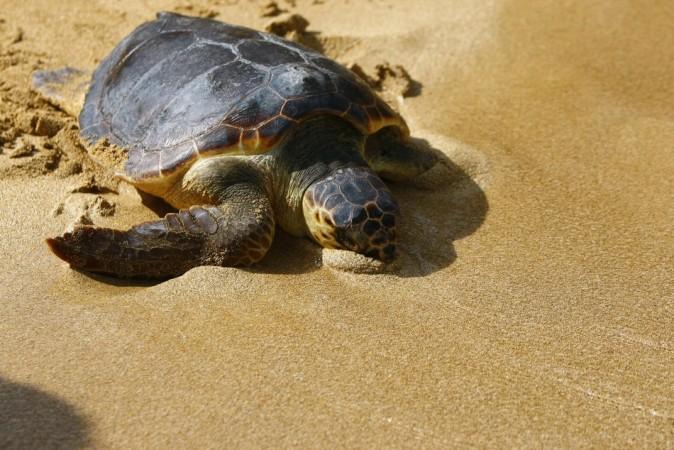
Scientists have known since long that certain species of turtles breathe out through their rear end or anus but were unable to understand the phenomenon.
Turtles living in cold climates such as the Australian Fitzroy river turtle and the North American eastern painted turtle are among those who use cloaca, their back opening as a respiratory channel in low-oxygen environments.
Cloaca is an opening through which turtles urinates, excretes and lays eggs too, according to an article in io9.
They conducted an experiment where small amount of food coloring were placed near the turtles. It was observed that the animal could take in water from both the ends – the opening through the mouth and even its back end. The scientists came to the conclusion that a turtle's shell , emerging from the animals' vertebrae and ribs is fused together, is responsible for the creature's adaptation to the different breathing method.
During hibernation, the animal adapts to various body mechanisms. Since these animals have no ribs, the lungs and muscles, helping in respiration,do not function. Instead it has muscles that help the body protrude towards the opening of the shell and allow it to inhale air while another set of muscles squeeze the turtle's gut to help exhaling air. The mechanism is especially dangerous during hibernation , where there is a lack of fresh air. While the shell aids in reducing blood acidity by absorbing some of it, the cloaca produces enough oxygen so that the turtle doesn't have to engage in a lot of manual breathing.
"The cloaca of some kinds of freshwater turtles, such as our eastern painted turtle, has fingerlike extensions that are abundantly supplied with blood vessels. The muscular walls of the cloaca contract and relax forcing water in and out of the chamber. If a painted turtle hibernates in a pond where some dissolved oxygen is available, the cloaca will serve as a respiratory device," wrote Bill Amos, biologist with Northern Woodlands magazine, for Daily Digest News.
Turtles also have an easier way of butt breathing. Sacs close to the Turtle's cloaca, called bursa easily expand and the walls of these sacs are lined with blood vessels. The sacs are squeezed out as the oxygen diffuses through the blood vessels. The turtle utilizes little energy in the whole process, which is beneficial for the animal as they are deficient of energy during hibernation.

















